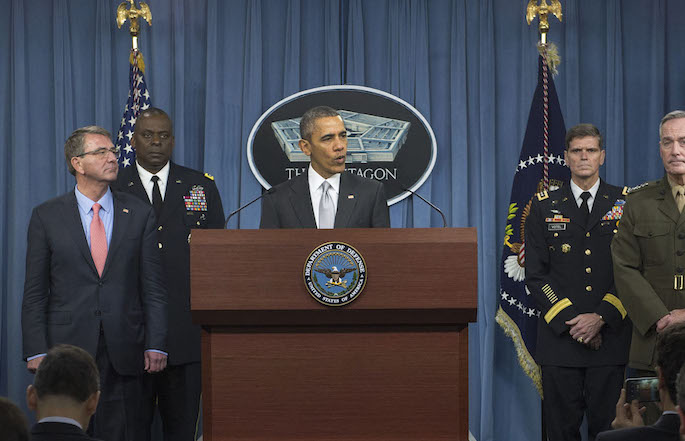Defense Outlook 2016: What to Know, What to Expect
Defense Outlook Series

Report Summary
This report is part of “Defense Outlook: A CSIS Series on Strategy, Budget, Forces, and Acquisition,” a new International Security Program initiative examining the dynamics and interlinkages of strategy, budget, forces, and acquisition on the current and future state of the U.S. Armed Forces.
This inaugural report in the Defense Outlook Series looks back at what happened in 2015, specifically with respect to strategy and the security environment, the debate in congress over the defense budget and force structure, and changes in the acquisition system, and looks ahead to what these developments may mean in 2016 and beyond. Three overarching themes emerged from this analysis on defense strategy, budget, forces, and acquisition.
The first is that the administration is unlikely to propose major changes in its last year in office. Its policies are largely set, and its strategic reviews are long published. In 2016, the administration will likely continue implementing these plans and policies and stick to the two-year budget deal negotiated in 2015. The president may use his executive powers to change particular policy areas, including in national security, but the overall strategy, defense budget, structure of the forces, and major acquisition programs are unlikely to change.
The second theme is that the world will not stand down for a year while the United States waits to elect a new president. China, Russia, North Korea, Iran, and ISIS will continue to drive events to which the U.S. must respond. Congress seems willing to take up some issues now, like defense reform and the size of the armed forces, but some level of strategic agility may be necessary.
The third theme is that the recent budget agreement likely represents a turnaround for the defense budget. When 2015 began, the budget caps remained at the original level set by the BCA. The BBA 2015 budget deal raised the budget caps for FY 2016 and FY 2017, and there is reason to believe that this pattern of last-minute deal making could continue through the end of the budget caps in FY 2021. The prospective turnaround in acquisition budgets may also prompt changes in industry behavior.
Looming over all of these issues is the U.S. presidential election cycle. With primaries and caucuses about to begin, candidates who once were vague may be pressed into being more specific about their proposed national security policies and program, especially as the general election approaches. The issues outlined here provide key defense issues on which candidates should be prepared to take positions. By this time next year, a new presidential administration will be in place. The choices it makes will guide the direction of defense policy, budget, forces, and acquisition in 2017 and beyond.

